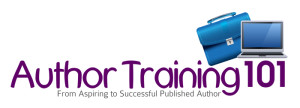 In the writing world, there’s an ongoing debate about whether or not to plan out the content of a book prior to typing that first word. It’s the “mappers vs. pantsers,” those who like to map out what they will write first versus those who like to write “by the seat of their pants” or as the inspiration hits them.
In the writing world, there’s an ongoing debate about whether or not to plan out the content of a book prior to typing that first word. It’s the “mappers vs. pantsers,” those who like to map out what they will write first versus those who like to write “by the seat of their pants” or as the inspiration hits them.
Sometimes you can write a book “off the top of your head” and have it all make sense. More often than not, you end up needing to do a lot of editing because what you thought made sense when you were writing doesn’t make sense later to anyone but you. In other words, when you finish writing, the manuscript needs a lot of revising.
I have a tendency to be a pantser, but I’ve learned to be a planner. I now believe everyone should be. This is especially true if you write books to boost your business, to impact readers or inspire them to action of any sort. The reason why is simple: You’ll write your book a lot faster and more effectively and the end product will fulfill your purpose. Not only that, you’ll actually free yourself up to be more creative because you won’t worry about where the story or the content needs to go or whether it will end up at the correct destination.
Writing by the Seat of Your Pants
Let me tell you about one of my clients—actually a potential client. He really wanted to get his book written. It was intended to improve the K-12 educational system. Yet, he was floundering around and had been for a long time. He kept telling me that he knew all the material and was a great speaker. So, he should be able to just sit down and write, which is what he was doing.
He refuses to produce an outline—or even to decide on the best audience for his book. “It’s everyone…students, parents and teachers,” he told me. He thinks when they read his book they will all miraculously help change the system. He hasn’t decided who to target to best accomplish his goal—or how to accomplish that goal with his book.
He has about 12,000 words written. Recently he hired me for a strategy session, and as we talked, I pointed out that all he seemed to have in his manuscript were broad concepts. Yet, he wanted his book to inspire change. I told him he needed to provide solutions—and ones that a particular segment of his audience (a target market) could actually implement. This was a big aha moment for him.
Time to Revise
This writer doesn’t need to throw away what he has already composed. However, after struggling to get half his book written, he now needs to go back and determine if that part is clearly enough focused, if it serves the goal he set out to accomplish, or if he needs to rewrite, re-angle or revise drastically to make his project viable. That’s a pretty frustrating proposition when it took him so long to get this far.
This scenario could have been avoided with planning. He choose, instead, to write by the seat of his pants.
Writing with a Plan
Had my client chosen to take the time to do some serious planning—or to ask me what planning to do, I would have told him to start by determining:
- His ideal reader
- His target market
- His competition
With that information, he could focus his idea on what his readers wanted and needed and how to create the change he, as an author, wants to inspire. This would make his book more marketable. He had complained that when he spoke to large audiences they seemed interested, but no one contacted him later for more information. Not a good sign. Somehow he wasn’t capturing his audience.
Plus, he hadn’t looked at what other books have been published to see if what he was doing was different, new or necessary. Maybe what he was saying was old news. Same ol’, same ol’. That won’t inspire anyone to create change—or buy a product or service.
With the kind of research I suggest, he could create:
- A table of contents—basically an outline of his chapters
- Chapter summaries—a brief synopsis of each chapter so he knows what content he will include
These would be based on his research, angling the structure and content of his book to the needs and desires of his readers and market. He also would be sure to make his book better and more unique than those already published.
Then he could review his proposed content to see if it was on target. He could evaluate if his book:
- Addresses the needs of his readers—answers their questions, solves their problems or inspires them to change or create change?
- Is unique and different from other books in the marketplace already?
- Fulfills his purpose and its purpose?
Write a Necessary Book Easily and Effectively
If you follow this kind of plan, you can write your book easily, effectively and creatively. The whole book, and every chapter will be outlined, and you can sit down and just write with a map that leads you from start to finish. Your book will be just what your readers need and want. That means they will purchase it!
 The Author Training Manual: Develop Marketable Ideas, Craft Books That Sell, Become the Author Publishers Want, and Self-Publish Effectively, Nina Amir’s new book, provides all the information you need to create a business plan for your book and to train you to become a successful author. However, you also can get author training from Nina during the next Author Training 101 LIVE course. Starting May 6, you will receive audio and video lessons that correspond with the chapters. And, while you use take the course and complete the training exercises in the book, you get support during 8 weeks of group coaching. You’ll also get a bonus proposal/business plan template and more! Only 20 spots! Get more information and claim your spot by clicking here.
The Author Training Manual: Develop Marketable Ideas, Craft Books That Sell, Become the Author Publishers Want, and Self-Publish Effectively, Nina Amir’s new book, provides all the information you need to create a business plan for your book and to train you to become a successful author. However, you also can get author training from Nina during the next Author Training 101 LIVE course. Starting May 6, you will receive audio and video lessons that correspond with the chapters. And, while you use take the course and complete the training exercises in the book, you get support during 8 weeks of group coaching. You’ll also get a bonus proposal/business plan template and more! Only 20 spots! Get more information and claim your spot by clicking here.
Photo courtesy of istockphoto.com.